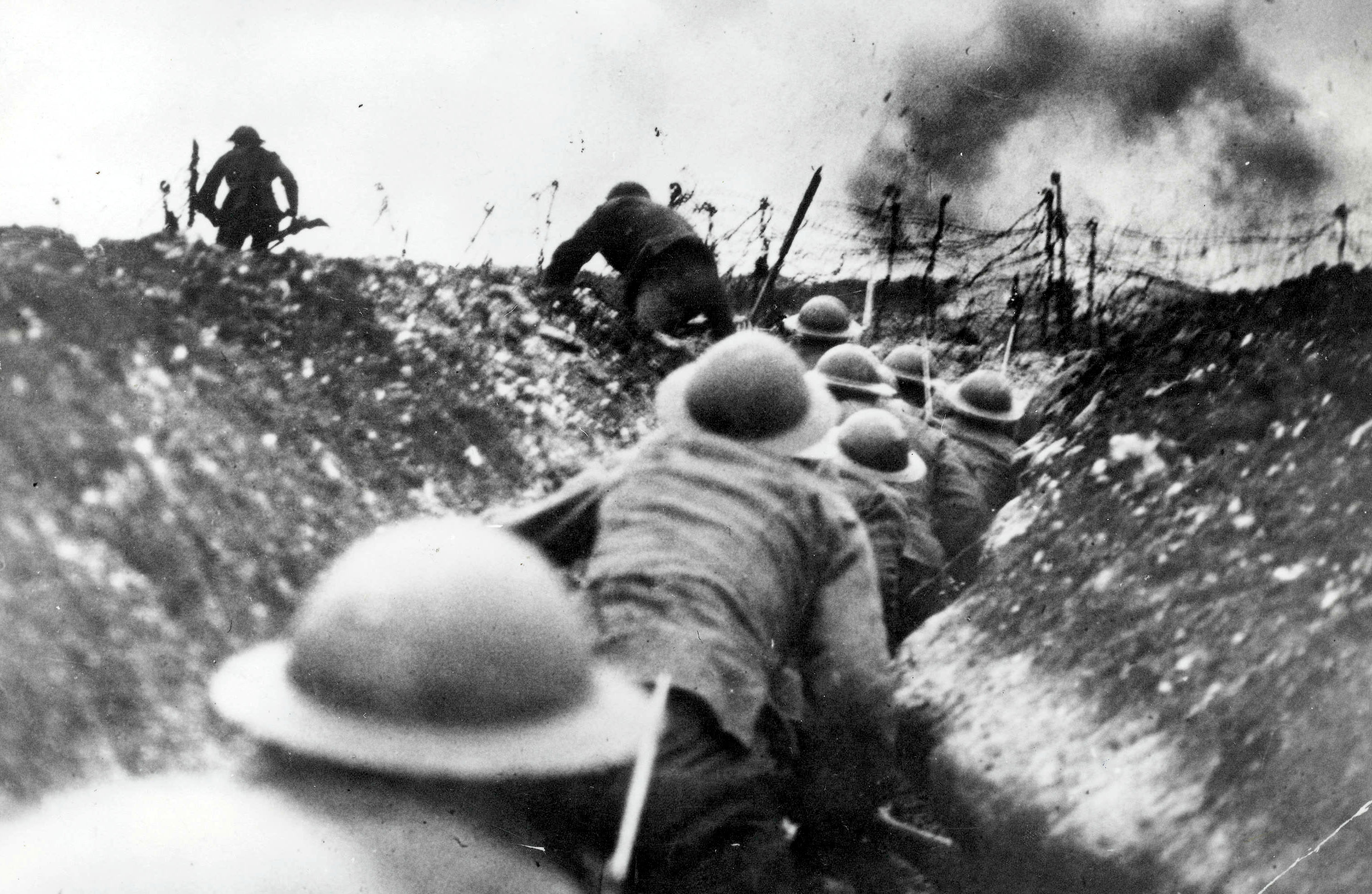Trench warfare is a form of warfare in which military units use a system of fortified ditches, or trenches, to defend positions and launch attacks. Trench warfare has existed since ancient times, when Roman legions dug trenches to protect their camps. It has been a feature of conflicts throughout history. Trench warfare became more widely used in the late 1800’s and early 1900’s, with the development of larger armies and more powerful weapons.

Trench warfare played a significant role in the American Civil War (1861-1865), most notably during the sieges of Vicksburg, Mississippi, and Petersburg, Virginia. But during World War I (1914-1918)—on the Western Front in northern France and Belgium—trench warfare became famous for its misery. The invention of barbed wire and machine guns had transformed how soldiers fought in trenches. Barbed wire slowed the movement of troops across the battlefield. Machine guns enabled defending soldiers to fire hundreds of shots against attackers in less than a minute. Rapid-fire heavy artillery, poison gas, mortars, hand grenades, and rifles also helped make trench warfare more lethal than it had ever been.
The fighting on the Western Front in World War I at first involved a considerable amount of troop movement. The initial campaigns ended in November 1914. The fighting armies then dug trenches to provide shelter from gunfire and to hold their defensive lines. Soon, soldiers began to connect individual trenches to form complex trench systems. The battle lines remained fixed for long stretches of time. Trench warfare is a static (nonmoving) form of warfare.
Typical front-line trenches were about 6 to 8 feet (1.8 to 2.4 meters) deep and wide enough to allow two soldiers to pass side by side. Sandbags and, in some places, concrete fortified the trenches. Narrow pieces of wood—called duckboards—on the ground in the trenches provided a walking surface. Dugouts deep in the sides of the trenches offered living spaces and additional protection. Support trenches ran behind and parallel to the front-line trenches. Troops and supplies moved through a network of communications trenches that linked the many layers of front-line and support trenches. By 1918, most parts of the Western Front had trench systems that extended 5 miles (8 kilometers) from the front on both sides.
Between the opposing trench systems lay a stretch of ground called no man’s land. No man’s land was typically filled with barbed wire defenses. It varied in width from less than 30 yards (27 meters) to more than 1 mile (1.6 kilometers). Artillery fire quickly tore up the earth of no man’s land.
Life in the trenches was miserable. The smell of dead bodies lingered in the air, and rats were everywhere. The troops suffered from the wet, mud, and cold. Poor conditions and enemy gunfire often prevented front-line soldiers from receiving food and fresh water. Soldiers stood guard, repaired trenches and telephone lines, dug latrines (pits that were used as toilets), and carried rations and equipment from behind battle lines. At night, patrols repaired barbed wire and raided enemy trenches. Even during periods of relative peace, thousands of soldiers died each week in the trenches. Such casualties were sometimes called wastage.
For the first 3 1/2 years of World War I, trench defenses were so strong along the Western Front that neither side was able to advance. During unsuccessful attempts to break the deadlock, huge numbers of soldiers were sent over the top (out of the trenches and across no man’s land). They attacked well-defended positions again and again, producing millions of casualties (people killed, wounded, or captured). In March 1918, a large German offensive finally broke the stalemate on the Western Front. Mobile warfare—not seen since the early months of the war—resumed, and the opposing armies gradually abandoned their trench systems. The Allied armies eventually pushed the Germans back until Germany was forced to accept an armistice (agreement to end the fighting). The war ended in November 1918.
Trench warfare has occurred in many conflicts since the end of World War I. However, the increased use of mobile weapons, such as tanks, airplanes, and missiles has made it far less frequent and significant.
See also World War I .
